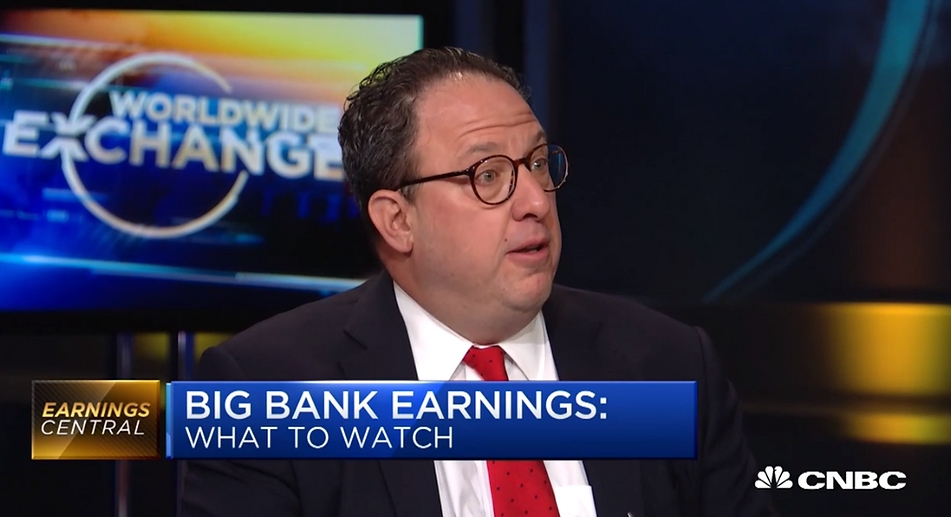Is the sleepy Joe … Biden as the very first illegitimate POTUS - Build Back Better – agenda currently set to motion?
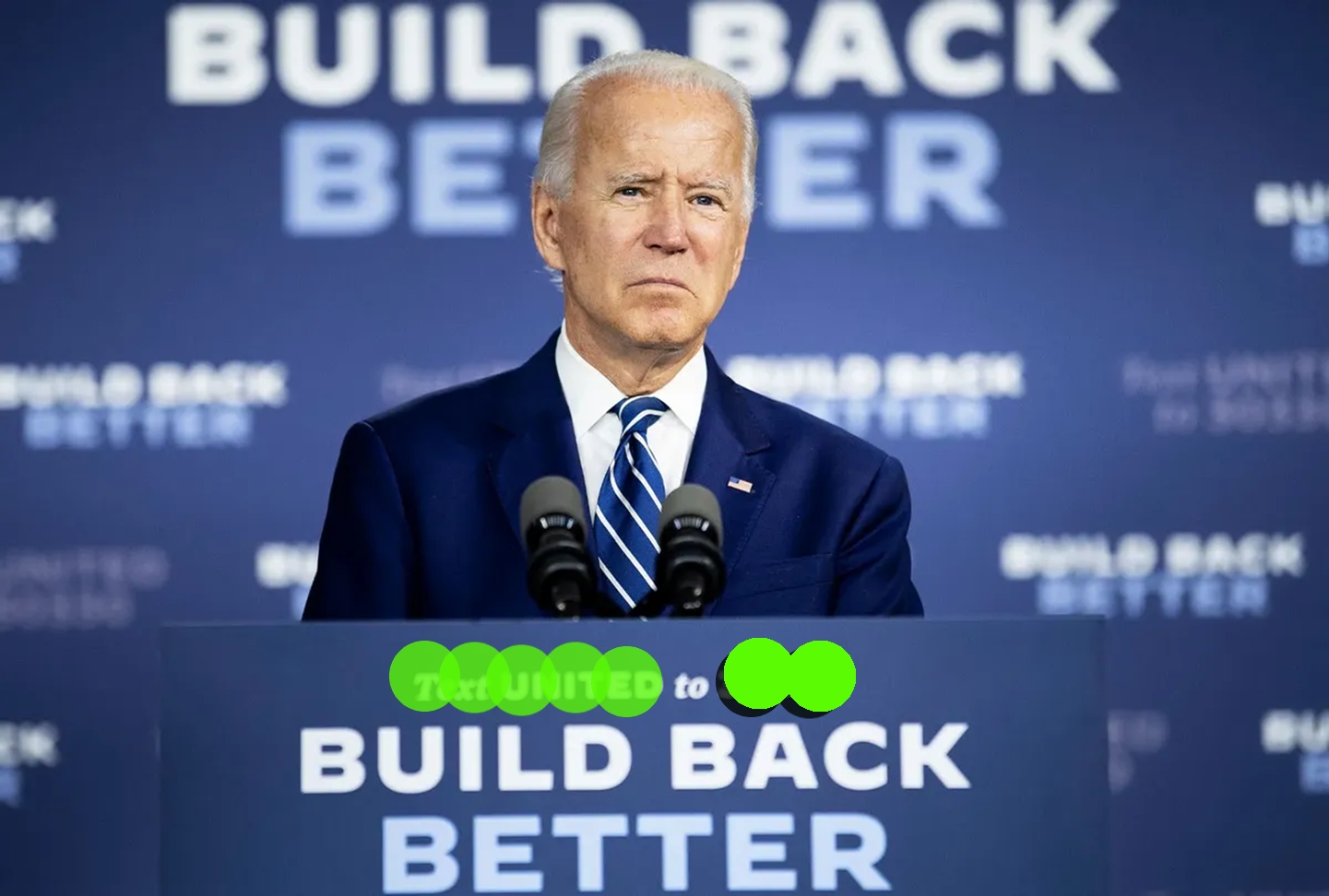
The entire problem of the US economy comes with
the FOMOC Committee as the members of this committee have no clue … what they
are doing … and the law makers as member of US Congress has no clue what the
FOMOC Committee is doing as well.
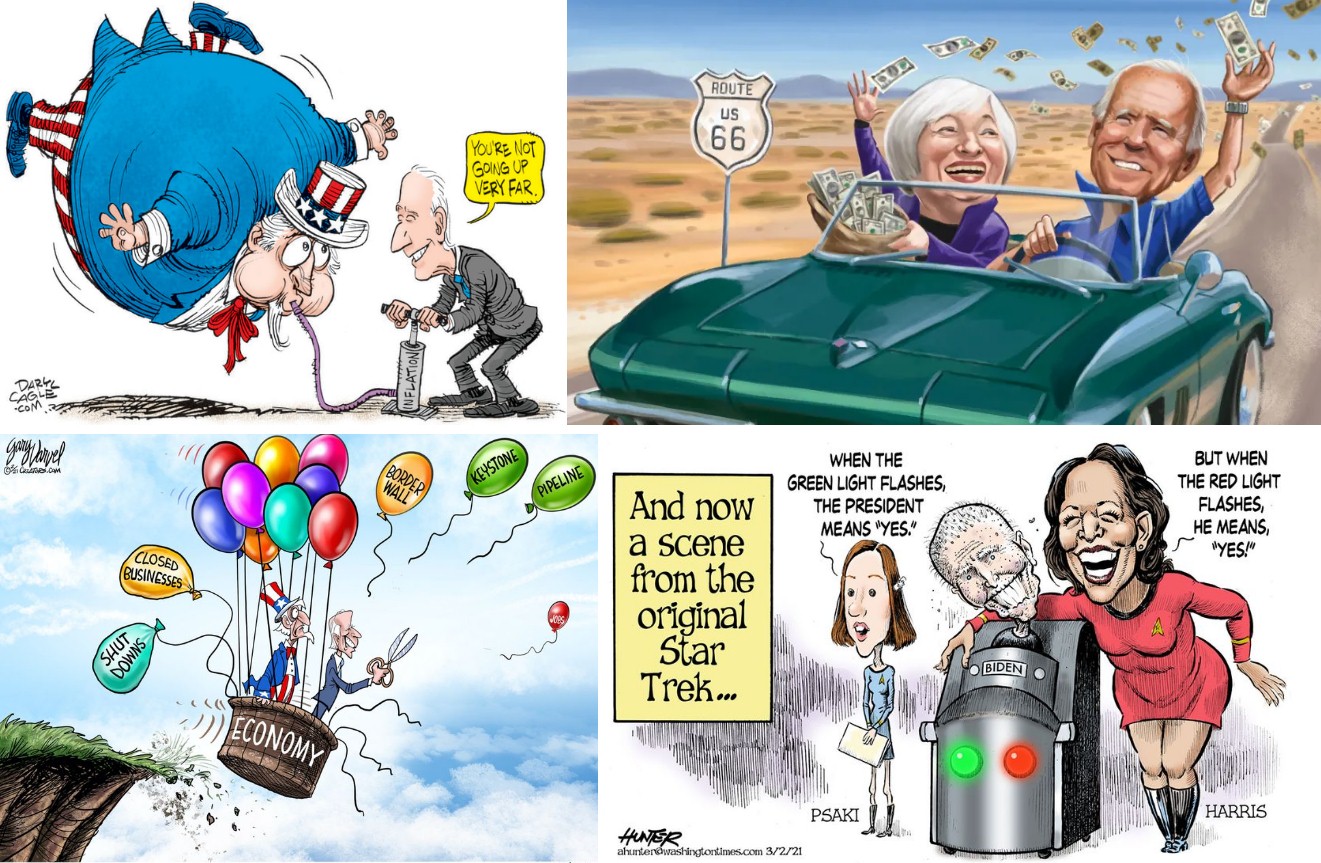 On
Jan. 30, 2019, the Federal Open Market Committee of the Federal Reserve System
announced to little fanfare a momentous change in how it conducts monetary
policy. The change was adopted without
any formal notice or request for public comment, nor with any formal input from
Congress or the Administration.
Nevertheless, the change has had and will continue to have a profound
effect on the role of the Federal Reserve in the United States financial
system. To implement policy in its new
regime, the Fed not only has to be much bigger but also must continuously grow
larger and expand the breadth of its counterparties. The record indicates that the FOMC did not
appreciate the consequences of its decision at the time, and the question now is
whether the decision will be revisited given how manifest and serious those
consequences are. Specifically, the Fed announced that it would conduct monetary
policy by over-supplying liquidity to the financial system, driving short-term
interest rates down to the rate that the Fed pays to sop the liquidity back
up. Previously, the Fed had kept reserve
balances (bank deposits at the Fed) just scarce enough that the overnight
interest rate was determined by transactions between financial institutions;
those transactions consisted of banks with extra liquidity lending to those that
needed it. Now the rate is determined by
transactions between banks and the Fed.
Moreover, the Fed has committed to providing so much extra liquidity that
it would not need to adjust the quantity of reserve balances it is supplying in
response to transitory shocks to liquidity supply and demand. The floor system
is not working well. It has not made
monetary policy implementation easier nor interest rate control better. Instead, it has required the Fed to keep
growing and expanding its set of counterparties.
On
Jan. 30, 2019, the Federal Open Market Committee of the Federal Reserve System
announced to little fanfare a momentous change in how it conducts monetary
policy. The change was adopted without
any formal notice or request for public comment, nor with any formal input from
Congress or the Administration.
Nevertheless, the change has had and will continue to have a profound
effect on the role of the Federal Reserve in the United States financial
system. To implement policy in its new
regime, the Fed not only has to be much bigger but also must continuously grow
larger and expand the breadth of its counterparties. The record indicates that the FOMC did not
appreciate the consequences of its decision at the time, and the question now is
whether the decision will be revisited given how manifest and serious those
consequences are. Specifically, the Fed announced that it would conduct monetary
policy by over-supplying liquidity to the financial system, driving short-term
interest rates down to the rate that the Fed pays to sop the liquidity back
up. Previously, the Fed had kept reserve
balances (bank deposits at the Fed) just scarce enough that the overnight
interest rate was determined by transactions between financial institutions;
those transactions consisted of banks with extra liquidity lending to those that
needed it. Now the rate is determined by
transactions between banks and the Fed.
Moreover, the Fed has committed to providing so much extra liquidity that
it would not need to adjust the quantity of reserve balances it is supplying in
response to transitory shocks to liquidity supply and demand. The floor system
is not working well. It has not made
monetary policy implementation easier nor interest rate control better. Instead, it has required the Fed to keep
growing and expanding its set of counterparties.
 On
one level, the story of President Biden's first year is a simple one: Americans
feel worse about the pandemic and economy than they did earlier in his term, and
his ratings have suffered for it. Majorities say he isn't paying enough
attention to either the economy or inflation — together, their top issues — not
just that he isn't handling them well. His overall approval at the one-year mark
is 44%, and it's been in the 40s since this fall. That is, however, despite the
fact that only 26% of Americans think things in the country are going well. Mr.
Biden saw his approval drop months ago without a subsequent recovery. At the
start of his term, his rating was up in the 60s, buoyed by optimism about
getting the pandemic under control. The honeymoon had faded by summer. Dear Joe
Biden money are not leaves and does not grown on trees.
On
one level, the story of President Biden's first year is a simple one: Americans
feel worse about the pandemic and economy than they did earlier in his term, and
his ratings have suffered for it. Majorities say he isn't paying enough
attention to either the economy or inflation — together, their top issues — not
just that he isn't handling them well. His overall approval at the one-year mark
is 44%, and it's been in the 40s since this fall. That is, however, despite the
fact that only 26% of Americans think things in the country are going well. Mr.
Biden saw his approval drop months ago without a subsequent recovery. At the
start of his term, his rating was up in the 60s, buoyed by optimism about
getting the pandemic under control. The honeymoon had faded by summer. Dear Joe
Biden money are not leaves and does not grown on trees.
As an outcome we are - Fellow
members of the US Bankruptcy. The US Treasury, Federal Reserve and current
administration of the White House try everything possible to make honest dollar;
Markets Raffles, Markets bazaars and block parties as for that instance oncoming
Feb. 26 2022 George Washington birthday ball. Now, we all know that business has
been rotten lately. So, to furnish US with the details I will call the body in
charge of the rotten business FOMOC Committee which shall read the statement for
our current fiscal year reads as follows; - “we’re busted”
But instead the FOMOC Committee issues two
different minutes from November and December 2021.
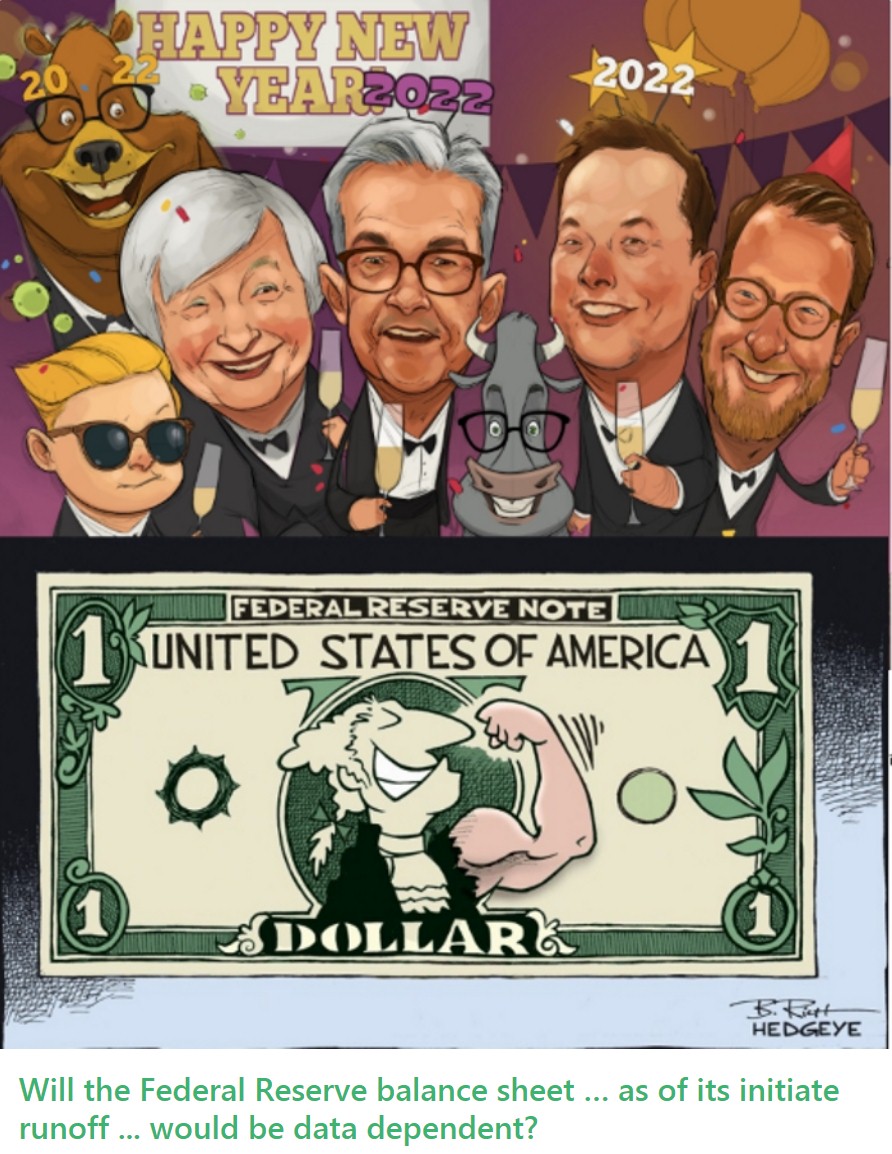 In the first article (click on the
image to the right) we
have explained as “Balance Sheet Runoff” where we have pointed
that Primary Dealers being tied of forced investment in Treasury securities, have move these
liquidities to other business operation and currently the Treasury run on
deficit about 100 trillion dollars as virtual fund desperately needed for the
futures maturity dates of the mentioned treasury securities. Considering
additional fact that the intention is to stop asset purchase will cause the
disaster with raising cost as debt service we are at the very edge of the
financial cliff. Today I will have corroborated not just the future financial
situation of the US Treasury but the date described by FOMOC Committee as “resulting in an end to net asset purchases
in mid-March” which in reality shall be interpreted as financial collapse
date.
In the first article (click on the
image to the right) we
have explained as “Balance Sheet Runoff” where we have pointed
that Primary Dealers being tied of forced investment in Treasury securities, have move these
liquidities to other business operation and currently the Treasury run on
deficit about 100 trillion dollars as virtual fund desperately needed for the
futures maturity dates of the mentioned treasury securities. Considering
additional fact that the intention is to stop asset purchase will cause the
disaster with raising cost as debt service we are at the very edge of the
financial cliff. Today I will have corroborated not just the future financial
situation of the US Treasury but the date described by FOMOC Committee as “resulting in an end to net asset purchases
in mid-March” which in reality shall be interpreted as financial collapse
date.
A joint meeting
of the Federal Open Market Committee and the Board of Governors of the Federal
Reserve System was held by videoconference on Tuesday, December 14, 2021, at
9:00 a.m. and continued on Wednesday, December 15, 2021, at 9:00 a.m. The
meeting adjourned at 11:00 a.m. on December 15, 2021. But the minutes of this
meeting were released on January the 5 2022. It was agreed that the
next meeting of the Committee would be held on Tuesday–Wednesday, January 25–26,
2022. In response, the Propaganda Machine as Reuters for that instance followed
by Bloomberg, CNBC or Fox News etcetera, imprinted to general bread consumers
reality perception that the strengthening economy and higher inflation could
lead to earlier and faster interest-rate increases than previously expected,
with some policy makers also favoring starting to shrink the balance sheet soon
after.
But what they as
the Propaganda Machine shall tell for you … goes like
this;
Beginning in
January, the Committee will increase its holdings of Treasury securities by at
least $40 billion per month and of agency mortgage-backed securities by at least
$20 billion per month. Increase the SOMA holdings of Treasury securities as
described, during the monthly purchase period beginning in mid-January.
Regarding the outlook for U.S. monetary policy, expectations for a reduction in
policy accommodation shifted forward notably. Respondents to the Open Market
Desk’s surveys of primary dealers and market participants broadly projected that
the Committee would quicken the pace of reduction in the Federal Reserve’s net
purchases of Treasury securities and agency mortgage-backed securities (MBS),
and the median respondent projected net asset purchases to end in March 2022.
The median respondent’s projected timing for the first increase in the target
range for the federal funds rate also moved earlier from the first quarter of
2023 to June 2022 according to the November minutes. But to understand that we have to focus on
November policy prediction and subsequent performance;
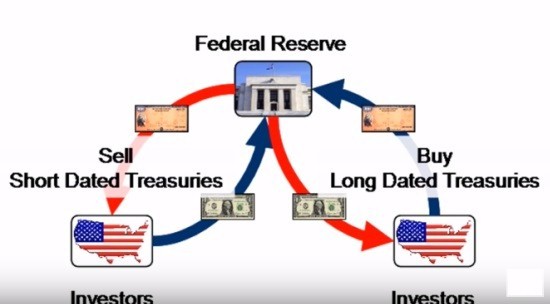 In November reductions
intention in the Federal Reserve’s net purchases of Treasury securities and
agency mortgage-backed securities (MBS) pace which subsequently were
implemented, the System Open Market Account (SOMA) portfolio (click
on the image to the left for details) shall peak around next
June at about $8.5 trillion. In reality this happened in January 2022. And what
was not anticipated at November FOMOC Committee
was the default as burden of this intention. The Treasury used the Rollovers
tool to balance the finance of the GOV. A SOMA Treasury rollover describes the
process by which principal payments from maturing Treasury securities held by
the SOMA are reinvested in newly auctioned securities. Specifically, the Open
Market Trading Desk at the Federal Reserve Bank of New York places
non-competitive bids at Treasury auctions, in an amount equal to all or a
portion of the maturing Treasury securities, that will settle on the maturity
date of the maturing Treasury securities. On the auction settlement date, the
maturing Treasury securities are exchanged for the newly issued Treasury
securities. But this operation at the very same time does create deficit in
liquidity portfolio redirecting all operation to bankruptcy definition. In other
words, the overnight loan, be granted upon participation in this process. Quote
from Federal Reserve Bank of NY; “Loans are awarded based on competitive bidding
in a multiple price auction for each security. Primary dealers that have elected
to participate in the program may submit bids via FedTrade after the auction has been announced. Loan awards
are constrained by dealer limits. In addition, the New York Fed reserves the right to reject
bids at its discretion, when it is believed that granting the loan would
facilitate a dealer’s ability to control
a specific issue.”
In November reductions
intention in the Federal Reserve’s net purchases of Treasury securities and
agency mortgage-backed securities (MBS) pace which subsequently were
implemented, the System Open Market Account (SOMA) portfolio (click
on the image to the left for details) shall peak around next
June at about $8.5 trillion. In reality this happened in January 2022. And what
was not anticipated at November FOMOC Committee
was the default as burden of this intention. The Treasury used the Rollovers
tool to balance the finance of the GOV. A SOMA Treasury rollover describes the
process by which principal payments from maturing Treasury securities held by
the SOMA are reinvested in newly auctioned securities. Specifically, the Open
Market Trading Desk at the Federal Reserve Bank of New York places
non-competitive bids at Treasury auctions, in an amount equal to all or a
portion of the maturing Treasury securities, that will settle on the maturity
date of the maturing Treasury securities. On the auction settlement date, the
maturing Treasury securities are exchanged for the newly issued Treasury
securities. But this operation at the very same time does create deficit in
liquidity portfolio redirecting all operation to bankruptcy definition. In other
words, the overnight loan, be granted upon participation in this process. Quote
from Federal Reserve Bank of NY; “Loans are awarded based on competitive bidding
in a multiple price auction for each security. Primary dealers that have elected
to participate in the program may submit bids via FedTrade after the auction has been announced. Loan awards
are constrained by dealer limits. In addition, the New York Fed reserves the right to reject
bids at its discretion, when it is believed that granting the loan would
facilitate a dealer’s ability to control
a specific issue.”
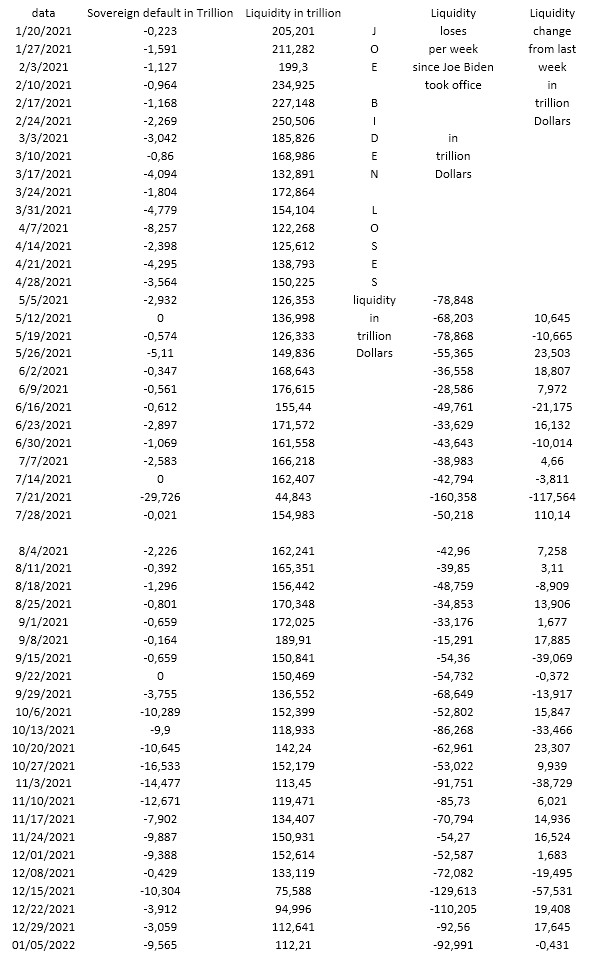 In terms of
composition, Treasury securities and agency MBS would constitute roughly 70
percent and 30 percent of the SOMA portfolio, respectively—roughly in line with
the shares of Treasury securities and agency MBS in the total stock of these
securities outstanding—and the SOMA portfolio would be more heavily weighted
toward Treasury securities than after the conclusion of the third large-scale
asset purchase program 2014 following the global financial crisis. Participants
also expected that economic conditions would evolve in a manner such that
similar reductions in the pace of net asset purchases would be appropriate each
subsequent month, resulting in an end to net asset purchases in mid-March, a few
months sooner than participants had anticipated at the November FOMC meeting.
Members also agreed that similar reductions in the pace of net asset purchases
would likely be appropriate in subsequent months, implying that increases in the
Federal Reserve’s securities holdings would cease by mid-March under the
Committee’s outlook, a few months sooner than had been anticipated at the
previous meeting.
In terms of
composition, Treasury securities and agency MBS would constitute roughly 70
percent and 30 percent of the SOMA portfolio, respectively—roughly in line with
the shares of Treasury securities and agency MBS in the total stock of these
securities outstanding—and the SOMA portfolio would be more heavily weighted
toward Treasury securities than after the conclusion of the third large-scale
asset purchase program 2014 following the global financial crisis. Participants
also expected that economic conditions would evolve in a manner such that
similar reductions in the pace of net asset purchases would be appropriate each
subsequent month, resulting in an end to net asset purchases in mid-March, a few
months sooner than participants had anticipated at the November FOMC meeting.
Members also agreed that similar reductions in the pace of net asset purchases
would likely be appropriate in subsequent months, implying that increases in the
Federal Reserve’s securities holdings would cease by mid-March under the
Committee’s outlook, a few months sooner than had been anticipated at the
previous meeting.
The entire problem is less
complicated than that. The Government may have plenty of money for every issue
as they may come-up with and do to the fact as US economy comes with the FOMOC
Committee as the members of this committee have no clue … what they are doing …
and the law makes as member of US Congress has no clue what the FOMOC Committee
is doing as well. If there be just few Members of the Congress with open mind we
can solve the debt – deficit and monetary policies within a week or so. But we
have to get rid of the sleepy Joe first and let open mind personnel to govern
the country.
By Peter von Roggenhausen Jan. 20 2022.

